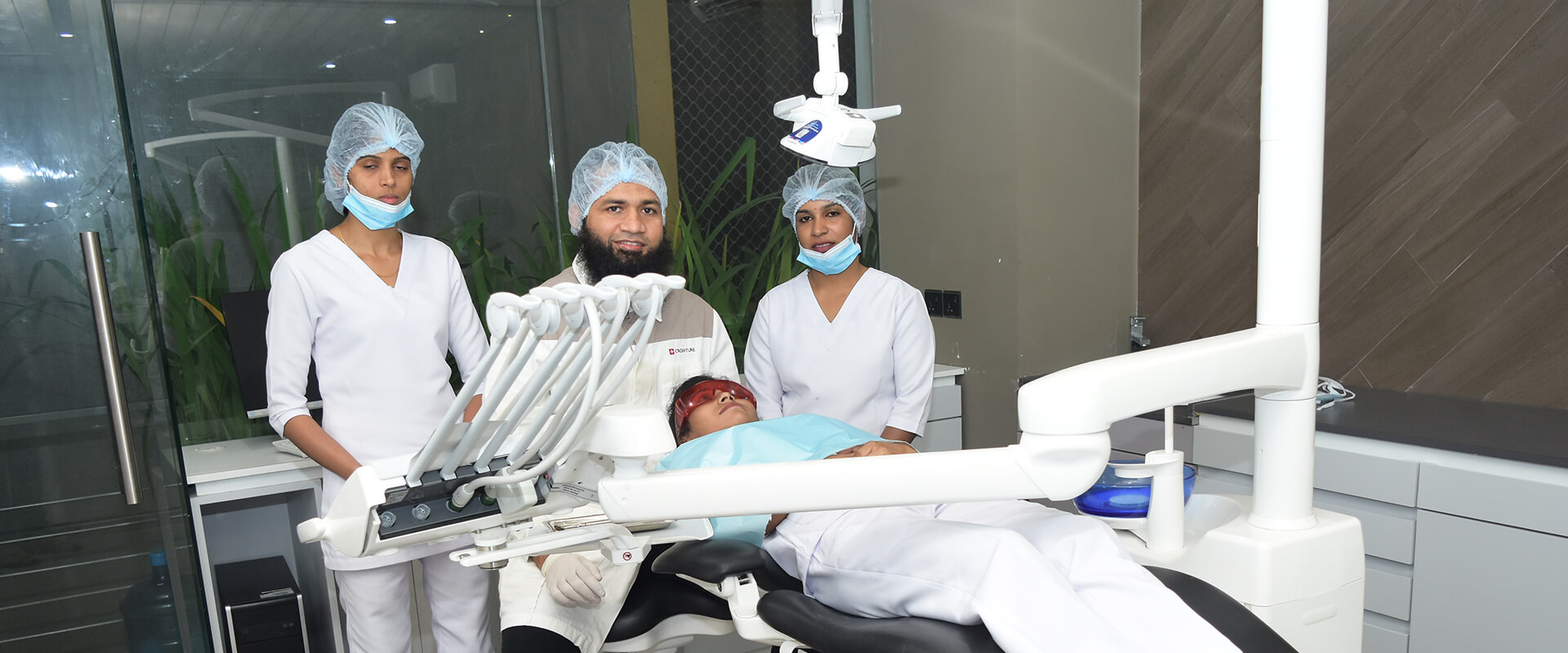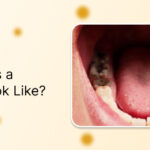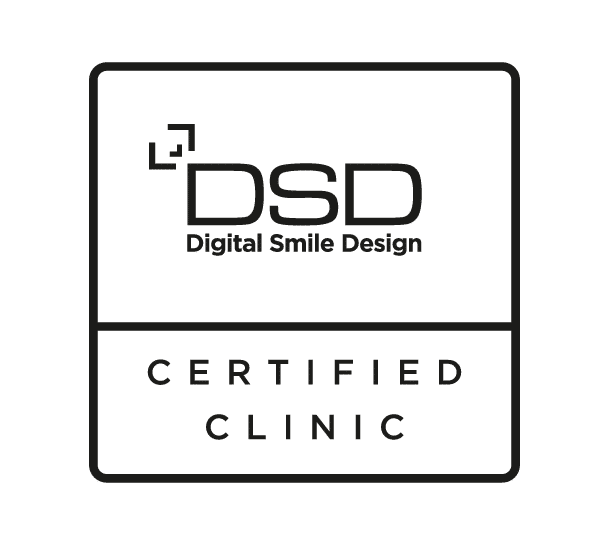Does Oil Pulling Whiten Teeth?
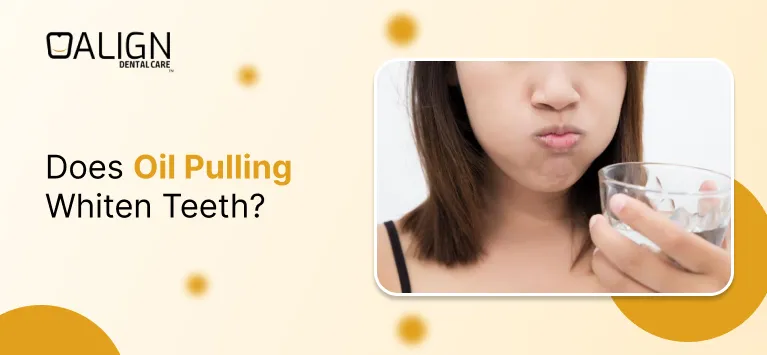
Oil pulling is an ancient practice that has gained modern-day popularity as a natural method to improve oral health. Swishing oil in your mouth is believed to help remove bacteria, plaque, and other impurities, leading to a cleaner mouth and fresher breath. While many people swear by its benefits, a common question remains: does oil pulling actually whiten teeth? In this article, we’ll explore what oil pulling is, how it works, the benefits it offers, and whether it can truly make your teeth whiter.
What is Oil Pulling?
A spoonful of oil, such as coconut oil, is swished in your mouth for 15 to 20 minutes while the oil is pulled. During this time, the oil binds to bacteria, plaque, and other impurities, which are then removed when you spit out the oil. It’s a simple process believed to promote oral health, freshen breath, and potentially reduce surface stains on teeth.
What’s the Origin of Oil Pulling?
Oil pulling is an ancient Ayurvedic practice dating back thousands of years. Originally from India, it was used as a traditional remedy to detoxify the body, improve oral health, and balance overall health. Traditionally, sesame oil was the most commonly used oil for this practice. Coconut oil gained popularity later due to its natural antibacterial properties, mild flavor, and easy availability, making it especially popular for oral care in the modern wellness community.
Benefits of Oil Pulling
Oil pulling has multiple potential benefits, including:
- Improved Oral Health: The swishing action helps remove bacteria and plaque, leading to a cleaner mouth.
- Fresher Breath: It can reduce the bacteria that cause bad breath, making your mouth feel fresher.
- Reduced Plaque and Gum Health: Oil pulling may reduce plaque formation by eliminating bacteria, helping support healthy gums.
Does Oil Pulling Whiten Teeth?
While there is no reliable scientific evidence that oil pulling whitens teeth, it can help make them look cleaner by removing surface stains and reducing bacteria. The practice mainly promotes better oral hygiene, which can lead to a brighter appearance over time. So, while it may not provide significant whitening, oil pulling can contribute to a fresher, healthier smile.
Choosing the Right Oil for Oil Pulling
When starting oil pulling, picking the right oil is essential. Look for oils with strong antibacterial qualities, a mild taste, and a smooth texture to make swishing more comfortable.
Here are some key factors to consider:
- Antibacterial Effect: The oil should help reduce harmful bacteria in your mouth.
- Nutrient Profile: Oils with high lauric acid content are great for fighting bacteria and viruses.
- Flavor and Texture: Choose an oil with a taste and texture you find pleasant, as it will be in your mouth for a while.
- Purity and Organic Quality: Organic, cold-pressed oils are best because they are free from chemicals and retain their natural benefits.
Best Oils for Oil Pulling
Several oils are popular for oil pulling, each offering distinct advantages:
- Coconut Oil: Known as one of the top choices, coconut oil contains lauric acid, which has strong antibacterial properties, helping to fight bacteria linked to tooth decay and gum disease.
- Sesame Oil: Traditionally used in Ayurveda, sesame oil is valued for reducing plaque and detoxifying the mouth. It’s a good choice for oil pulling due to its anti-inflammatory and antibacterial effects.
- Sunflower Oil: With its light flavor, sunflower oil is also widely used. It’s rich in Vitamin E, an antioxidant that supports healthy gums.
- Clove Oil: Clove oil is valued for its pain-relieving and antibacterial properties, making it helpful for soothing gums and reducing bacteria in the mouth.
- Neem Oil: Often used in Ayurvedic medicine, neem oil has potent antibacterial and anti-inflammatory properties, making it an excellent option for promoting oral health.
- Mustard Oil: Known for its warming effect, mustard oil helps improve blood flow in the gums, offering a unique benefit for maintaining oral health.
Each oil has unique properties, so you can choose one based on your preference.
How to Oil Pull
If you’d like to try oil pulling, follow these steps:
- Put About 1 Tbsp (15 ml) of Oil in Your Mouth: Coconut oil is a popular choice, but other oils like sesame or sunflower work too.
- Swish for 15-20 Minutes: Move the oil around your mouth gently. Avoid using too much force, as it may cause discomfort in your facial muscles.
- Spit Out the Oil: To avoid clogging your pipes, spit the oil onto a piece of paper and dispose of it in the trash.
- Brush Your Teeth: After oil pulling, rinse with water and brush your teeth as usual.
Tip: Some people prefer oil pulling on an empty stomach before brushing, often doing it in the morning while showering.
How Does Coconut Oil Whiten Teeth?
Coconut oil has natural antibacterial properties, which may help remove plaque and bacteria that can cause yellowing or dull teeth. When coconut oil binds with these impurities during swishing, it can help clear away surface stains, leaving teeth looking cleaner and potentially whiter. However, it does not chemically whiten teeth like traditional whitening agents do.
Financial Benefits of Oil Pulling
Oil pulling can be a cost-effective way to maintain oral hygiene. Compared to expensive whitening treatments and dental products, a jar of coconut oil is relatively affordable and can last several weeks to months. By potentially reducing plaque and improving oral health, it may also help cut down on future dental expenses.
Conclusion
While oil pulling may not directly whiten teeth like traditional whitening treatments, it can help reduce surface stains and improve oral hygiene, leading to a fresher and healthier-looking smile. Its ability to remove plaque and bacteria contributes to better oral health and can enhance the natural brightness of your teeth over time. With the right oil and regular practice, oil pulling can be a simple, cost-effective addition to your oral care routine.
What everybody ought to know about teeth whitening pens?
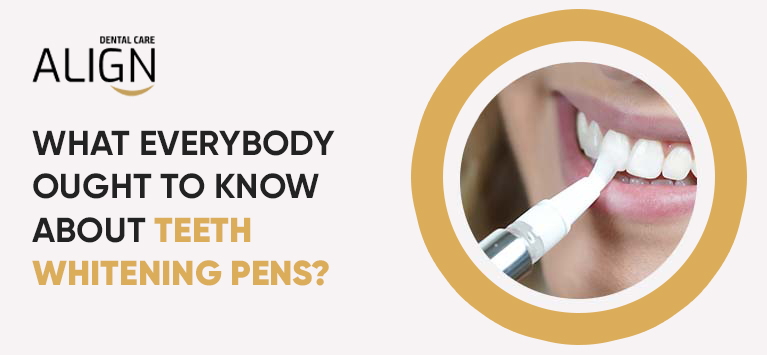
Teeth whitening pens are small pens with thin plastic tubes containing whitening gels. Carbamide peroxide or Hydrogen peroxide is used as this product’s whitening substance, but the formula varies for each brand. The product is designed to touch up challenging teeth stains and is used between the whitening process. This portable teeth-whitening apparatus is also known as a brush-on whitener.
The practice of using this over-the-counter whitening product is increasing gradually nowadays. Many patients interrogate us about the authenticity and effectiveness of this product. Hence our dentists and oral hygienists have shared the important things everyone should know before using teeth-whitening pens. Keep reading.
Read More…Different types of teeth whitening procedures
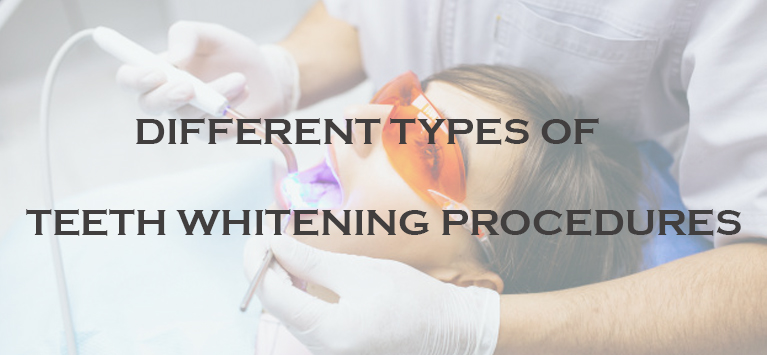
A whiter and brighter smile is a dream for all. If you wish to get whiter teeth there are a lot of procedures available. You can choose the best out of it. Here are some teeth whitening procedures that help you.
Professional teeth whitening
Professional teeth whitening is the best and safest method to whiten your teeth. This method is usually performed by the dentist, and they know well about your teeth. They reduce the risk of gums and teeth damage.
Here in this method, a highly concentrated hydrogen peroxide gel is applied on the teeth, and the gel is hardened using polymerization light. The process is repeated until the teeth become whiter.
If you want to whiten your teeth within a day, professional teeth whitening is the best option. Remember it is expensive too.
In-home whitening
This is also one of the best methods of teeth whitening. In this method, your dentist will take an impression of your teeth and prepare a custom-made tray. A whitening gel is filled into the tray and placed it on your mouth. This keeps the gel in place and avoids direct contact with the gum as it harms.
The result will be achieved typically within 2 to three weeks.
Whitening toothpaste
While all toothpaste removes some surface stains due to their abrasiveness, whitening toothpaste do it a bit more. It can remove staining in teeth but not the internal color of your teeth.
This is because whitening toothpaste is more abrasive than normal toothpaste. A combination of whitening toothpaste and an electric toothbrush is an ideal option for teeth whitening.
Baking soda
This method is very easy where you can simply add water with baking soda and dip your toothbrush in it and brush your teeth. This method is very safe, as there are no harmful chemicals involved. This will remove some surface stains and brighten your teeth effectively.
Oil pulling
Oil pulling is an ancient method used to maintain healthy teeth and prevent bleeding gums. Coconut oil is mostly used for oil pulling. It eliminates bacteria that cause bad breath and remove some surface stains. It does not completely whiten your teeth, but due to its large benefits, it should be added to teeth whitening procedures.
Tips to prevent stains on teeth
- Always eat food rich in nutrition
- Brush your teeth regularly with proper brushing technique
- Floss Regularly
- Rinse your mouth after each meal
- Avoid coffee, dark tea, and red wine
- Quit smoking
- Do oil pulling regularly
Always visit your dentist and get the best solution for your problems. Don’t create any problem by taking any risk on your teeth. Have a brighter smile.
Tips to keep your teeth white after a whitening treatment
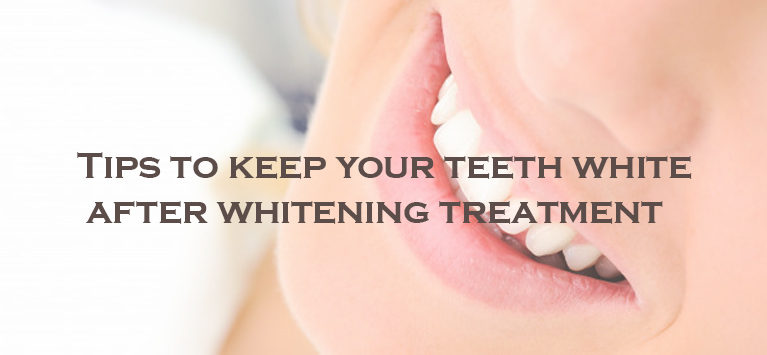
White and bright teeth are a dream to all that improve your self-confidence and smile. While not all the people have whiter teeth naturally, there is a way that provides a brighter smile called professional teeth whitening.
This professional teeth whitening is one of the best cosmetic procedures in dentistry that gives a long term result. These results withstand for a long period only if we follow some of the procedures after this whitening treatment. Let us see some of the aftercare tips after whitening your teeth professionally.
Brush twice with whitening toothpaste
The key to maintaining whiter teeth is brushing twice a day. If you drink something that stains your teeth particularly beverages that are sweet or acidic, you should brush compulsory after drinking those beverages. This helps to remove stains and bacteria in your teeth by removing sugar.
Dentists recommend brushing your teeth after each meal but most people have no time on it. Whatever, you should brush at least twice a day to maintain the whiter teeth. Use toothpaste that is specially designed for whitening teeth. Find the best whitening toothpaste as advised by your dentist.
Use a straw
You may have already known that some drinks like coffees, red wine, dark colas, and some acidic drinks, etc., stains and damage your teeth. While you cannot completely cut these items from your diet list, you can limit these drinks.
Another ideal option is using a straw for drinking; this avoids the direct contact of those beverages from your teeth, especially your front teeth that are most visible.
Stop Dark pigmented foods/drinks
Meanwhile, the reason for tooth discoloration is consuming dark-colored foods or drinks. If maintaining whiter teeth is your only goal, you can limit those items.
Floss
Flossing a day is much important as like brushing twice a day. It helps to maintain healthy gums and also boosts the color of the teeth. Flossing eliminates the residues, and bacteria buildups in the gaps between your teeth, thus the coloration of the gaps will be improved.
Simply brushing teeth won’t remove these hidden bacteria’s; hence flossing improves the overall look of your teeth.
Use whitening kits
Some whitening products are specially designed for tooth whitening. Tooth whitening toothpaste and mouthwash products are highly effective and are readily available.
For the best result, the combination of an electric toothbrush and whitening toothpaste helps you to clean every nook and corners.
Stop smoking
Smoking is the number one enemy for your teeth. It stains your teeth by turning it into brown from yellow. If you think to maintain sparkling white teeth, you should quit the habit of smoking.
Regular dental checkups
Visiting your dentist twice a year is one of the best ways to maintain healthy teeth. Here you can know the reason for stain after a whitening treatment. Hence you must regularly visit your dentist to maintain whiter teeth.
Dental touchups
Tooth whitening is not a permanent one; hence you need to visit your dentist again for touchups. Regular cleanings and touchups help you to know the condition of your teeth. It helps you smile brightly every day.
Tip: Foods to eat after teeth whitening
- Milk
- Egg whites
- White Yogurt
- Strawberries
- Carrots
- Broccoli
- Cheese
- Water
Following these tips help you to maintain healthy and brighter teeth forever. Have a sparkling smile ahead!
Home Remedies to get rid of yellow teeth
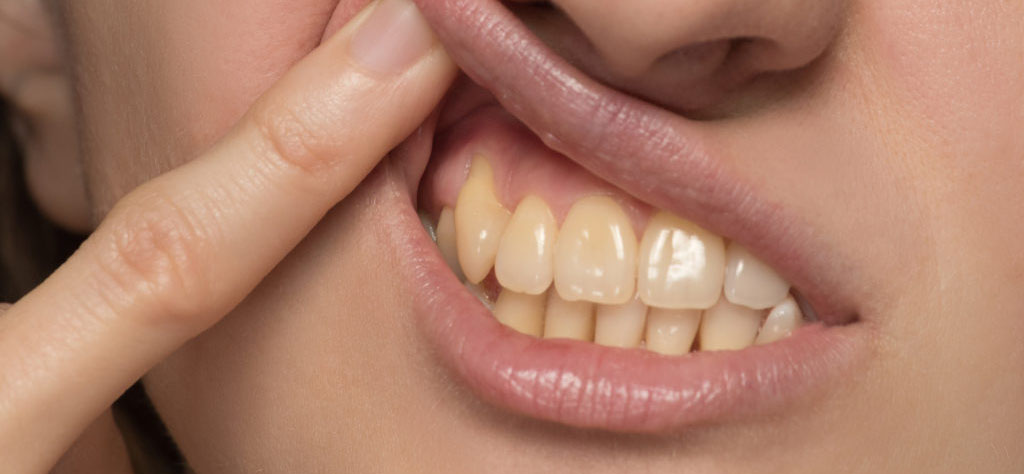
Changes in the colour of your teeth may be subtle and happen gradually. Some yellow colour may be inevitable. Teeth can look more yellow especially as you age. As the outer enamel wears away, the yellowy dentin underneath becomes more visible. Dentin is the calcified tissue beneath the enamel.
Read More…




